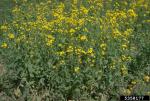BLUE SPRINGS, Mo. — Increasingly, gardeners are interested in finding out how to grow vegetables without using synthetic fertilizers.
“While there are a number of organically derived fertilizers that can be applied to plants, they tend to be costly,” said Marlin Bates, University of Missouri Extension horticulture specialist. “On a larger scale, sustainable and organic farms rely on a few key cultural practices that increase the fertility of the soil in the root zone of the vegetable crop. The common theme among these practices is that they all increase soil organic matter content.”
Organic matter is the driver of soil life, Bates says. It is responsible for feeding plants as well as supporting beneficial bacteria and fungi.
“Nutrients within the organic matter fraction of the soil are often held in a plant-unavailable form,” he said. “The beneficial microorganisms convert these nutrient compounds into a form that the plant can take up.”
A soil rich in organic matter will harbor a larger population of these microorganisms than a soil with low organic matter content. “The important aspect of this phenomenon is that the microorganisms gradually release plant-available nutrients, spoon-feeding the plants throughout the season so that you don’t have to.”
The most common way to increase soil organic matter content is to apply either compost or manure.
“To gain the maximum benefit of nutrients from these materials, it is best to incorporate them into the soil,” Bates said. “This reduces the loss of nitrogen through volatilization.”
Compost can be applied to the vegetable garden before planting in the spring or at the end of the season in the fall. If you’re using manure, Bates recommends applying it after the garden has been terminated in the fall. This will maximize the amount of time between application and planting.
Cover crops also can increase soil organic matter content. “Shallow-rooted cover crops won’t necessarily increase the nutrient content of the soil—except for legumes who partner with bacteria to sequester nitrogen from the atmosphere—but they can recycle nutrients and keep them in place for the next season’s crop,” he said.
Deep-rooted, nutrient-scavenging cover crops can be used to mine nutrients from depths that vegetable plants can’t reach. In either case, the residue from decaying cover crop plantings, whether they are left lying on the soil surface or incorporated, slowly releases nutrients back into the soil, complementing the contributions of the soil’s organic matter.
“Members of the mustard family, including mustard, turnip, radish and canola, are great nutrient-scavenging cover crops,” Bates said. Because they grow rapidly in the fall and die off in the winter, they are a simple addition to any home garden planting rotation.
“Whether you increase the garden soil’s organic matter content through compost/manure application, cover cropping, or a combination, your vegetable garden will respond to the increase in soil fertility,” he said.
If you’re uncertain about your soil’s fertility levels, contact your local MU Extension office to ask about having your soil tested.
Read more http://extension.missouri.edu/news/DisplayStory.aspx?N=1545






